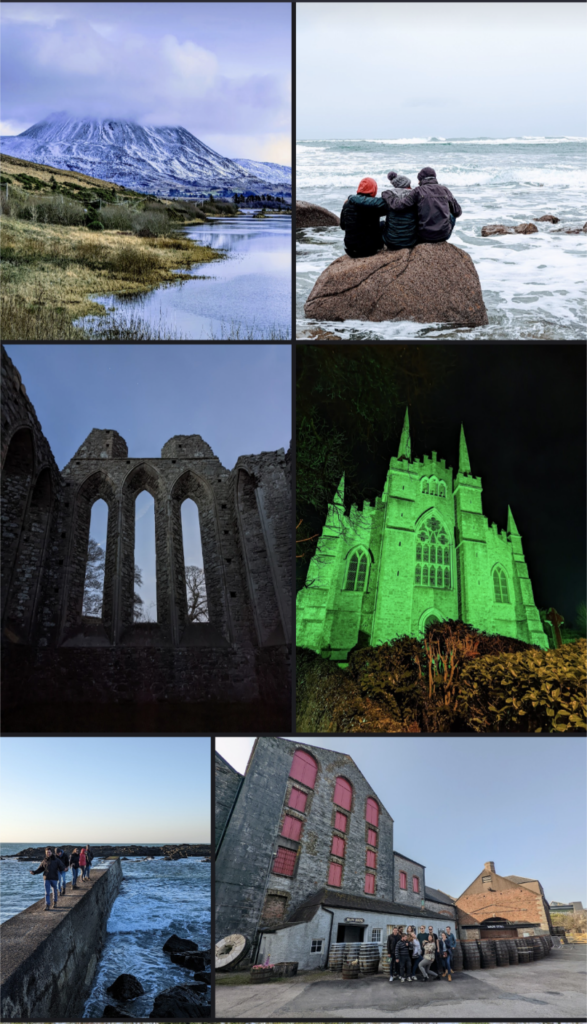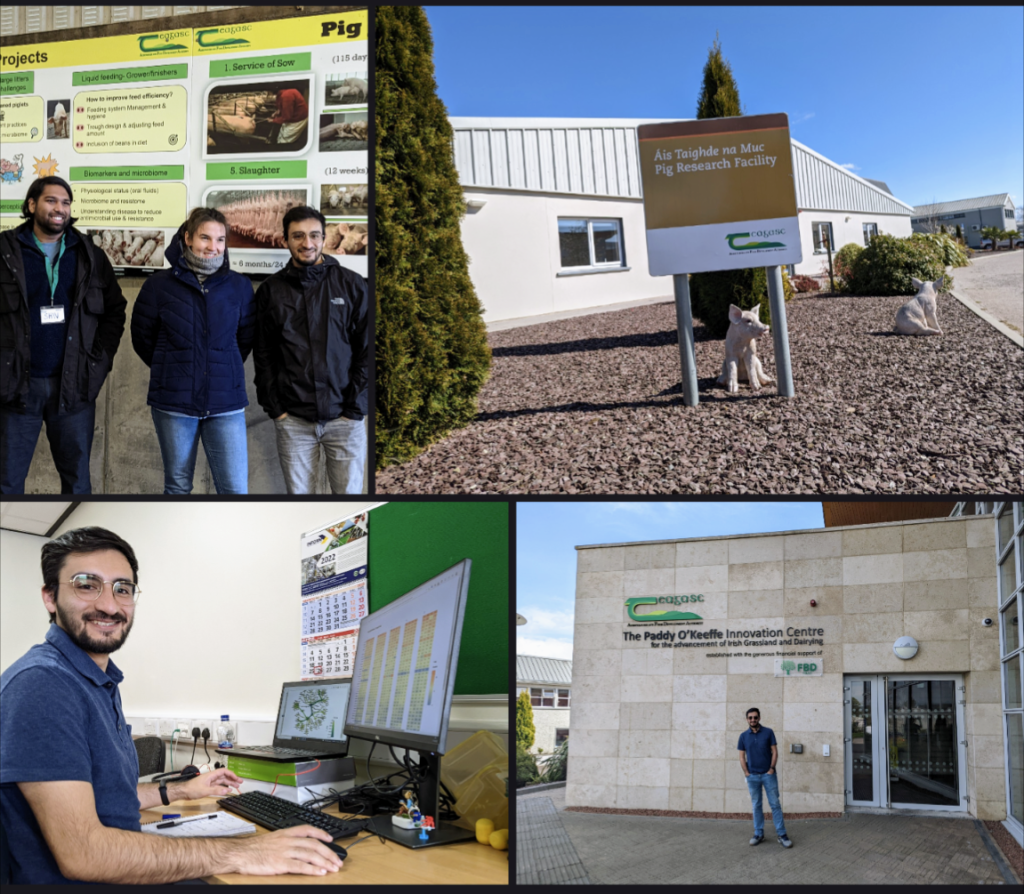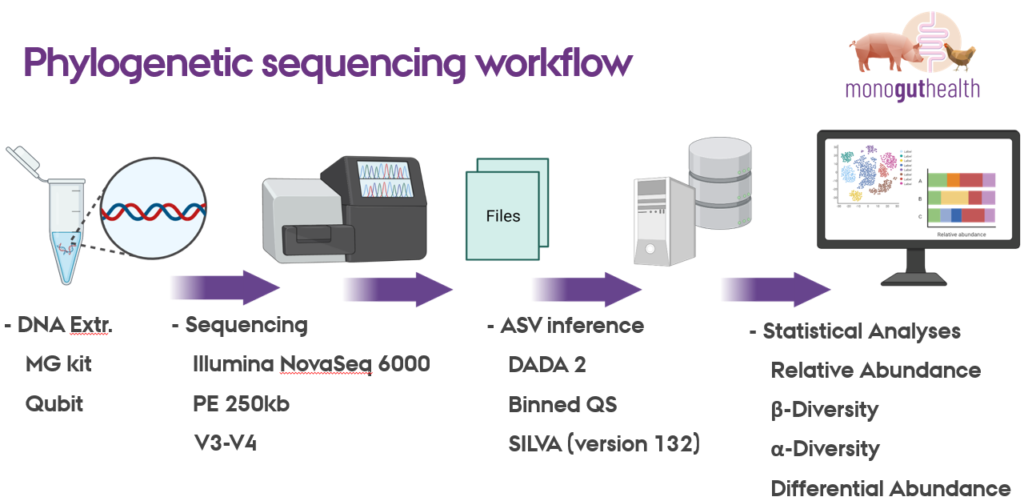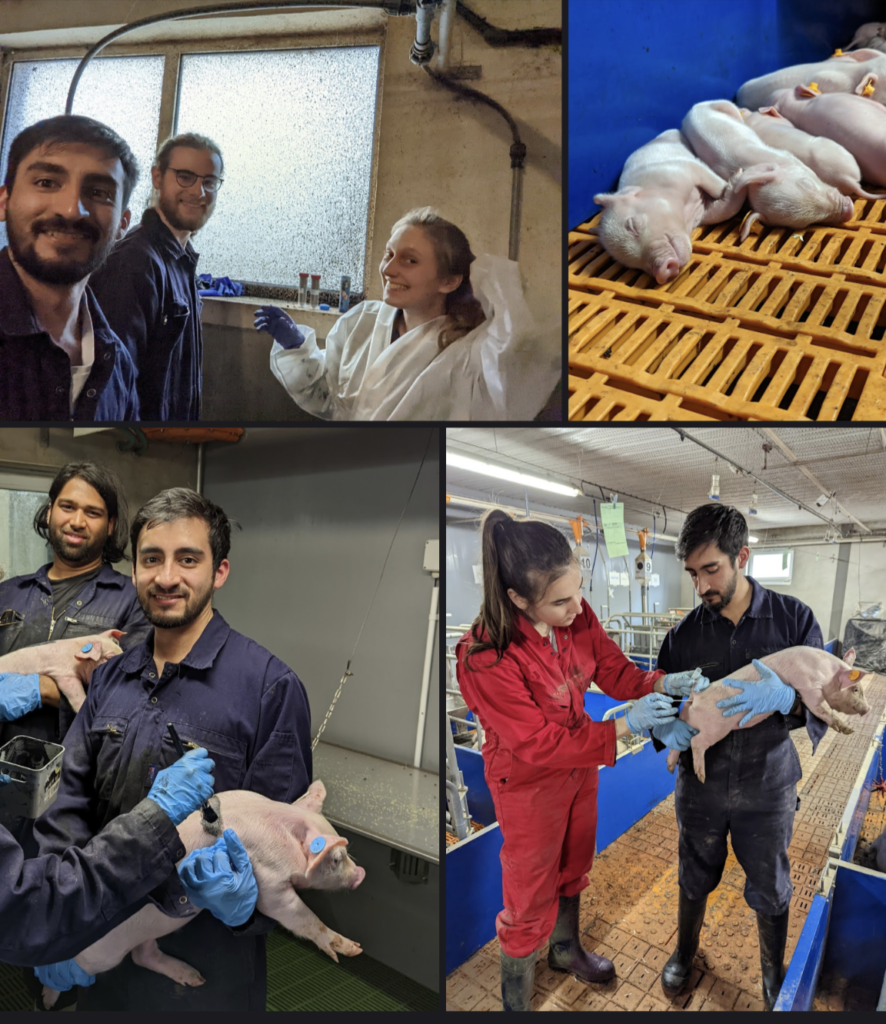ESR7 Secondment blog
“A traveller’s chief aim should be to make men wiser and better, and to improve their minds by the bad as well as good example of what they deliver concerning foreign places.”
Gulliver’s Travels, Jonathan Swift (Irish writer and clergyman)
International mobility is a major driver of work, inspiration, and network building for researchers. For three months, I had the amazing opportunity to work at Teagasc – the Agriculture and Food Development Authority – and experience life and culture in Ireland.
The place
When you think of Ireland, you probably think of green fields, charming villages, and picturesque pubs surrounded by mountains, rivers, and castles. Fermoy, the town where Teagasc is located, lives up to those expectations. Fascinatingly, I lived in the Richmond House’s ‘An Gáirdn Rndach’ (Secret Garden, in Irish Gaelic), a period property built around 1830. My secondment was certainly in an utterly fascinating location.

The office
Teagasc – the Agriculture and Food Development Authority – is the Irish body providing integrated research, advisory and training services to the agriculture and food industry and rural communities. It is also a place where PhD students from universities around Ireland (and the world) conduct their research on agriculture and food sciences.

I was able to participate in a number of different research projects. Moreover, I had the privilege of taking part in various dissemination and outreach activities with a wide variety of stakeholders. I participated at agriculture awareness activities, went to a swine health symposium, and even to a farm during one of the outreach officer’s regular advisory visits to farmers. Being able to give useful advice to farmers is a valuable skill. That trip taught me a lot.
The work
The main goal for my secondment at Teagasc was to learn how to analyze the microbiomeThe diverse consortium of bacteria, archaea, fungi, protozoa, viruses, and their collective genome f... data and elucidate the effects on the microbiomeThe diverse consortium of bacteria, archaea, fungi, protozoa, viruses, and their collective genome f... of challenged pigs supplemented with antibacterial plant cocktails for protection against post weaning diarrhea.

From DNA sequences to a plethora of bacterial taxonomies, Paul Cormican (ESR10 Advisor) at Teagasc steered me in the right direction. Using high-throughput amplicon sequencing data, I was taught how to implement a pipeline (DADA2) to infer exact amplicon sequence variants (ASVs) and investigate microbiomeThe diverse consortium of bacteria, archaea, fungi, protozoa, viruses, and their collective genome f... profiles.
I learned a lot from my sessions with Paul and now feel prepared to work with microbiomeThe diverse consortium of bacteria, archaea, fungi, protozoa, viruses, and their collective genome f... data and to identify the most appropriate tools for interpreting it. Furthermore, I had very fruitful discussions with my co-advisor Peadar Lawlor (ESR9 advisor) and Gillian Gardiner from the Waterford Institute of Technology (ESR9 and ESR10 co-advisor).

The People
Every life experience is heavily influenced by the company you keep. Without a doubt, the people were the highlight of my stay. I was very fortunate to be surrounded by amazing people in Ireland.

I immediately felt like I was part of the team at Teagasc. I had the opportunity to assist other PhD students with their research on a variety of topics ranging from biosecurity management to animal behavior, nutritional management, and strategies to improve health and performance. It was extremely rewarding to be able to assist with some of their activities.

I believe my secondment was successful in many ways. I learned and reinforced professional skills and worked in a fast-paced collaborative environment in which soft skills such as teamwork, collaboration, and effective communication were key. But it wasn’t all work; the coffee breaks, the evening walks through enchanted trails, the nights of traditional music accompanied by a Guinness, St. Patrick’s Day in Dublin, the weekend getaways to the hills, the cliffs and the forests, the movie nights, the historical castles, libraries, and cathedrals, all made for some fantastic memories. I had a wonderful time in Ireland, and I’m extremely grateful for the opportunity.
